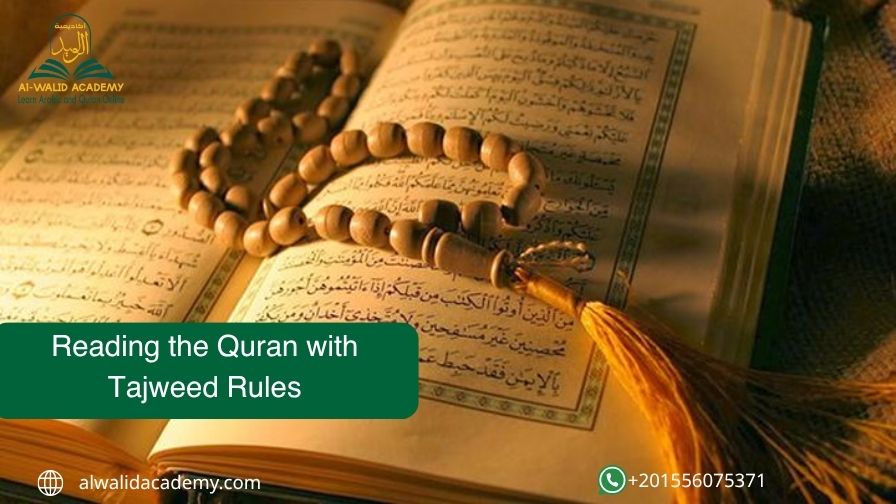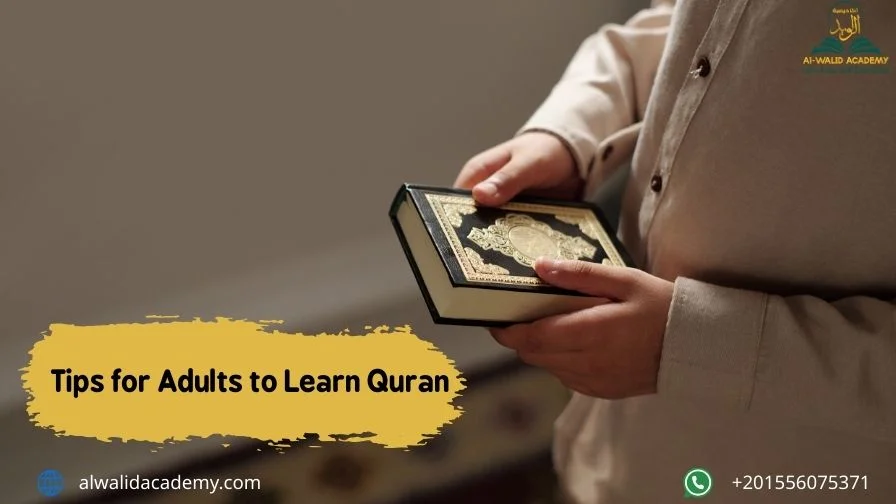Reading the Quran with Tajweed Rules is not just about reading correctly, it’s a journey that makes you feel every letter and pronounce it the way it was revealed to Prophet Muhammad. If you want to live the meaning and enjoy the recitation, Tajweed is the key that will open this door for you.
What Is Tajweed?
Look, the word Tajweed simply means that you pronounce every letter in the Quran from its correct place and give it its full right and characteristics, like ghunnah, shaddah, and madd. It’s not just about reading; it’s about living the meaning and feeling the verses the same way they were revealed to Prophet Muhammad.
Tajweed was mentioned as it’s a science whose main goal is to preserve the pronunciation of the Quran just like the companions heard it from the Prophet.
That means when you learn it, you gain more reward and preserve the meaning without making mistakes that could change it. Big websites explained it in a nice way:
-
First step: learn the letter articulation points (makhaarij), meaning you know where the letter comes from in your mouth or throat.
-
Then learn the characteristics (sifat), like tafkheem and tarqeeq — making the letter heavy or light depending on the rule.
If you’re starting your Tajweed Course, pairing it with a Quran Memorization Course makes applying the rules much easier and strengthens your recitation.
Why Reading the Quran with Tajweed Rules Matters
Honestly, Reading the Quran with Tajweed Rules is the key that makes you feel every word in the Quran and understand it in its true spirit. Tajweed is not just rules; it’s what makes the recitation close to your heart and makes you feel that you live with the verses, not just read them.
Why is this important?
-
Preserves the spiritual meaning of the Quran: When you pronounce the letters correctly, the meaning stays as it was revealed to Prophet Muhammad without any change.
-
Great reward for every letter: Every letter you read correctly equals ten rewards, imagine the reward if you apply this to a whole page!
-
Comfort and smoothness in recitation: Tajweed makes the recitation easier on your tongue and more beautiful to your ear.
-
Strengthens your connection to the Quran: The more you read correctly and feel the beauty of the sound, the more motivated you are to continue and review more.
A basic step in memorization and revision: Those who learn Tajweed memorize faster and fix the memorization in their minds because they connect correct pronunciation with meaning. -
Brings you closer to the recitation of famous Qurra’: And this gives you great motivation to continue and learn more.
-
A strong advantage at Al-Waleed Academy: We don’t just teach you the rule; we help you apply it and live with it until it becomes part of you in every recitation.
Core Tajweed Rules You Must Master
Look, if you want to master Reading the Quran with Tajweed Rules, you first need to grab the basic rules that everything is built on.
These rules are what will make you pronounce correctly and live every verse while feeling confident that your recitation is 100% accurate.
The basic rules you must start with
-
Madd (Elongation)
This means you extend the letter as the rule says, like the word “Al-Samaa” in Surah Al-Baqarah (Aya 19) where you extend the Alif to pronounce it correctly.
-
Idghaam (Merging)
Merging two letters together when they come after each other, like in “Man Ya’mal” in Surah An-Nisa (Aya 123) where the Meem and Noon merge and are pronounced with one tone.
-
Ikhfaa (Concealment)
Here you conceal the sound of Noon or Tanween and bring it out with a light ghunnah sound, like “Anzalnah” in Surah Al-Qadr (Aya 1).
-
Izhaar (Clear Pronunciation)
The opposite of Ikhfaa, you make the Noon or Tanween clear without ghunnah, like “Man Aamana” in Surah Al-Baqarah (Aya 62).
-
Iqlab (Conversion)
You turn the Noon into a light Meem when followed by the letter Baa, like “Yunba’” in Surah Abasa (Aya 15).
-
Ghunnah (Nasal Sound)
A light nasal sound that comes from the nose in specific letters like Noon and Meem with shaddah, like “Inna” in Surah Al-Kawthar (Aya 1).
-
Qalqalah (Echoing)
A slight bounce in the sound of the Qalqalah letters (Qaf, Ta, Ba, Jim, Dal) like “Ahad” in Surah Al-Ikhlas (Aya 1), and it’s clearer when the letter is at the end of the word.
Al-Walid Academy’s Advantage
In our academy, we don’t just explain the rule, we let you listen to examples from the Quran and apply them yourself until the rule becomes part of your daily recitation.
Many students join our Quran Classes for Adults to fix their pronunciation before moving on to Quran Recitation Course or full memorization.
Learn Quran, Arabic, and Islamic Studies with certified teachers in fun, interactive, and personalized sessions. Join thousands of students around the world and begin your path today!
Typology of Tajweed Mistakes
While learning Reading the Quran with Tajweed Rules, it’s very normal to fall into some mistakes, and this even happens with people who have been learning for years.
The most important thing is to know these types of mistakes and start avoiding them step by step.
Types of mistakes in Tajweed
1-Major mistakes (Lahn Jali)
These are mistakes that completely change the meaning, like if you pronounce a word incorrectly or switch a vowel and the meaning changes.
A simple example:
The word “ʿAlima” is different from “ʿUlima” — the difference in the vowel completely changes the meaning. This type must be taken seriously because it can distort the meaning of the verse.
2-Minor mistakes (Lahn Khafi)
These don’t change the meaning but affect the beauty and correctness of the recitation, like extending a letter more than necessary or shortening it, or softening the ghunnah where it should be heavier.
These mistakes are common, especially with beginners.
How to avoid these mistakes?
To avoid thes mistakes you should:
-
Listen a lot to trusted reciters and try to imitate them.
-
Practice out loud and record yourself to review your mistakes.
-
Take the rules one by one; don’t rush to learn everything at once.
-
Always review with a teacher or at an academy like Al-Walid Academy so someone can correct you instantly.
-
Use a Mushaf with colored Tajweed signs to make it easier to identify the rules.
At Al-Walid academy, we focus on helping students recognize these mistakes from day one and make sure they avoid them in practice, not just theory, so their recitation becomes correct and stays firm in their hearts.
For parents, we also provide Quran Lessons for Kids online, where children learn Tajweed through fun visuals and gradual steps.
Reading vs. Reciting vs. Tarteel
While learning Reading the Quran with Tajweed Rules, you need to know the difference between the different ways of recitation so you can use each one at the right time and benefit from it.
This difference helps you perfect your reading and understand the meaning better.
The difference between these types:
-
Reading (Plain reading)
This is when you read the Quran in your normal voice without focusing on melody or slowness; the goal is understanding or quick review for memorization.
You use it when you want to review large portions quickly or when you’re alone and want to focus on the meaning more than the sound.
-
Reciting (Tilawah)
Here the recitation is out loud with some beautification, it could be in loud prayers or when you’re reciting to someone.
You use it to feel khushu‘ (humility) and live with the verses while reading for yourself or in front of others.
-
Tarteel (Slow, measured recitation)
This is the way the Prophet used to read, calmly and with deliberation, pronouncing every letter from its place and giving each rule its right.
This method is perfect for reflection or learning because you pause at every Tajweed rule and apply it slowly.
Difference Between Reading, Reciting, and Tarteel in the Quran
This table will help you identify each one and when to use it according to your goal.
|
Type |
Description |
Purpose |
When to use it? |
Advantages |
|
Reading (Plain Reading) |
Reading without focusing on melody or slowness |
Understanding or quick review |
When you want to review or understand the meaning quickly |
Fast – useful for individual memorization |
|
Reciting (Tilawah) |
Reading out loud with some beautification |
Khushu‘ (humility) and letting others hear |
In loud prayers or in front of people |
Motivational – gives a spiritual feeling |
|
Tarteel (Measured Recitation) |
Reading calmly and slowly, pronouncing letters correctly |
Reflection and applying Tajweed rules |
During learning or detailed review |
More accurate and deeper – strengthens your bond with the Quran |
How to Start Your Tajweed Journey
If you want to start reading the Quran with Tajweed and don’t know where to begin, the easiest way is to go step by step.
The most important thing is to start right so that your recitation stays firm in your heart and on your tongue. Here's Practical steps to start your journey:
1-Learn the letters and their articulation points (Makharij)
Before any rules, you need to know where every letter originates in the mouth or throat, like the Alif from the middle of the throat, and the Raa from the tip of the tongue. This is the foundation that everything else will build on.
2-Understand the characteristics before the rules
Characteristics like tafkheem (heaviness), tarqeeq (lightness), and ghunnah (nasal sound) give the letter its personality. If you know its personality, you’ll find it easier to apply the rules later.
3-Start with the basic rules
After you master the letters and characteristics, move on to rules like Madd, Izhaar, Ikhfaa, and Idghaam.
Take each rule one by one and practice it until you master it before moving to the next.
4-Use a Mushaf with tashkeel and colors
The Mushaf that has colored Tajweed signs will make it easier for you to distinguish Madd, Ghunnah, and Qalqalah, and will make practical application faster and clearer.
5-Progress gradually
Take your time learning the rules, focus on one at a time so it sticks in your mind and feels natural when you recite.
6-Practice with your voice and listen to yourself
Record your recitation and listen to it; you’ll discover mistakes faster and know how to fix them yourself or with a teacher.
7-Join a trusted place for learning
Here comes the advantage of Al-Walid Academy: we don’t just explain the rule, we make you listen, apply with you, and keep following up step by step until you reach the correct level of recitation you dream of.
Alongside Tajweed, you can deepen your understanding through Learn Quran Tafseer Online, which helps you connect meaning with correct recitation.
10 Practical Tips to Master Tajweed
If you want to perfect Reading the Quran with Tajweed quickly and in an enjoyable way, there are some tips that if you apply, you’ll find yourself reading better and improving very fast.
-
Listen to skilled reciters to train your ear.
-
Fix a daily practice time, even 15 minutes.
-
Learn rules step by step, not all at once.
-
Record your recitation to catch mistakes.
-
Teach others what you learn to remember better.
-
Join group sessions for feedback and motivation.
-
Practice with a trusted teacher for corrections.
-
Use a colored Tajweed Mushaf for guidance.
-
Alternate between slow tarteel and faster review.
-
Keep your intention for Allah and stay consistent.
Beginners often combine their Tajweed Course with Learning Arabic for Beginners to master both pronunciation and understanding of the verses.
The Role of a Qualified Teacher
While learning Reading the Quran with Tajweed, having a knowledgeable teacher with an ijazah in the Quran saves you a lot of time and makes you learn correctly from day one instead of making mistakes and searching for someone to correct you.
Why must you learn with a qualified teacher?
-
A qualified teacher corrects your pronunciation instantly.
-
Knows how to give you the right method that matches your level, whether beginner or intermediate.
-
If they have an ijazah, their recitation is connected to the authentic chain back to the Prophet.
-
Gives you practical tips to improve your voice and make it easy to apply the rules.
To support new learners, we also offer an Online Noorani Qaida Course that builds a strong foundation before jumping into advanced Tajweed rules.
Personal learning vs. Online learning
Personal learning, If the teacher is near you, you can hear their voice directly and learn face-to-face, but sometimes it’s hard to find someone available or close to your home.
While in online learning, you can learn anytime and anywhere, and hear the teacher clearly as if they are in front of you, especially if the academy provides one-on-one follow-up like Al-Walid Academy.
Can You Learn Tajweed Online?
Many people ask: Can you learn Reading the Quran with Tajweed Rules online, or does it have to be face-to-face?
The truth is that online learning has become a very practical and easy solution, especially if the platform you learn with is trusted and offers real follow-up like Al-Walid Academy.
If you want to improve fluency, our Arabic Language Course and Online Arabic Conversation Classes help you strengthen articulation points essential for Tajweed.
Why is online learning an excellent option?
-
Flexibility in time and place: You learn from home and at any time that suits you, without wasting time on transportation or committing to difficult schedules.
-
Modern interactive tools: At Al-Walid Academy, we use recordings, short quizzes, and practical exercises that make revising the rule easy and hands-on.
-
One-on-one follow-up: Every student has a teacher who personally follows up, corrects mistakes instantly, and gives advice suited to their level.
-
Supportive environment: There is always encouragement and motivation from teachers so you feel you’re progressing steadily and improving consistently.
For those seeking higher mastery, Modern Standard Arabic and Quranic Arabic Course allow you to read and recite with deeper comprehension.
Best Age to Learn Tajweed
Many people ask: What is the best age to start Reading the Quran with Tajweed Rules? The truth is, any age works, but there is a certain stage where learning is faster and retention is stronger.
Why is early childhood the best?
-
A child’s ear easily picks up sounds, so they get used to correct pronunciation without much effort.
-
Their memorization ability is higher, and the rule sticks in their mind without them even noticing.
-
They grow up already used to reading correctly, so they don’t need to fix mistakes later on.
What about adults?
Adults can also learn normally and have a better awareness of the meaning, but they may need a little more time to break old reading habits.
Effective Daily Routine
If you want to perfect reading the Quran, the secret is not in studying for long hours.
The secret is in having a fixed daily routine, even if it’s a small amount of time, what matters is consistency. Here's Simple and effective daily routine:
-
10 minutes review: Spend about 10 minutes at the start of your day going over the rule you learned earlier or the verses you practiced before.
-
10 minutes practical application: Read out loud and apply the rule to new verses, and if there are mistakes, correct them right away.
-
5 minutes listening: Listen to a skilled reciter with Tajweed at the end of the day. This will tune your ear to correct pronunciation and help you distinguish between right and wrong.
Tips for sticking to the routine
Make your time fixed every day, like after Fajr or before sleep. Keep track of your progress to motivate yourself to continue. If you miss a day, just continue the next day without discouraging yourself.
How to Teach Children Tajweed
Teaching children Reading the Quran requires a different method than adults, because a child is influenced more by what they see and hear than by theoretical explanation.
Success here depends on the child’s commitment and gradual learning, and the duration can range from weeks to a year or more depending on their understanding.
How do we teach children Tajweed in a fun way?
-
Using visual aids and colors: Children love colors and pictures more than long explanations, so we use colored Mushafs and visual presentations to help the rule stick in their minds easily.
-
Gradual explanation: We start with letters and articulation points step by step, then add the basic rules like Madd and Ghunnah in a simple way suitable for their age.
-
Psychological rewards: Every small achievement deserves encouragement, a kind word, or a star on their notebook, these little things make a big difference in their love for recitation and their motivation to continue.
-
Creating a fun environment: We add light games or simple competitions so the child feels they are enjoying learning and not forced to do it.
How Long Does It Take to Master Tajweed?
Many people ask: “How long will it take me to master Reading the Quran with Tajweed Rules?” The truth is, there is no fixed time; the duration differs depending on your commitment, how often you practice, and your readiness to learn.
-
Some people master it in a few months if they practice daily.
-
Some people take a year or more if their time is limited or they learn gradually.
-
The secret is not speed… the secret is to make the rules firm and apply them correctly so they become part of your recitation forever.
Why Choose Our Academy (Al-Walid) for Tajweed?
If you’re looking for a place to teach you Tajweed correctly and walk with you step by step, Al-Walid Academy is the best choice because we offer features you rarely find anywhere else.
All our programs, including Quran courses online, are designed to work together so you can move smoothly from reading to understanding and living the Quran.
Our competitive advantages:
-
Teachers with Ijazah: Certified teachers with a chain connected to the Prophet.
-
A color-coded Mushaf for Tajweed: that helps you spot and apply the rules easily as you read.
-
Personalized review: Each student has an individual follow-up plan that suits their level.
-
Family support: We welcome teaching entire families (children and adults) at the same time.
-
Interactive enjoyable experience: Sessions with practical application and visual tools that make learning easy and fun.
Call us on +201556075371 and ask all you need to know, we will be with you until you are satisfied completely.
Tangible results and success stories
Our students have developed their recitation in a short time and reached a very high level of mastery, which shows in their confidence when reading and during prayer.
Many students who start Tajweed also enroll in Arabic Lessons Online to improve their understanding of Quranic words and pronounce them perfectly.
Conclusion
Learning Tajweed is a journey that transforms your spiritual life, and with Al-Walid Academy, you will start this journey with steady steps until you reach your goal.
Sign up now and start your first free session, and let your recitation of the Quran become the sweetest act of worship in your day.
FAQs
Is memorizing the Quran necessary before learning Tajweed?
Not at all. You can learn Tajweed while just reading, but if you’re memorizing the Quran, it makes correct reading easier from the start.
How is reading the Quran different from reciting it with Tajweed?
Yes. Reading is normal, but reciting includes Tajweed rules and your voice becomes calm and measured. Tarteel is even slower so you can apply the rules comfortably.
Can kids learn Tajweed effectively?
Of course. They actually learn faster if we use colors, games, and stories, just like what we do at Al-Waleed Academy.
Do I get a certificate after learning Tajweed?
At Al-Walid Academy, yes. When you finish the level and we make sure your recitation is correct, we take a step toward ijazah if you want to continue.



